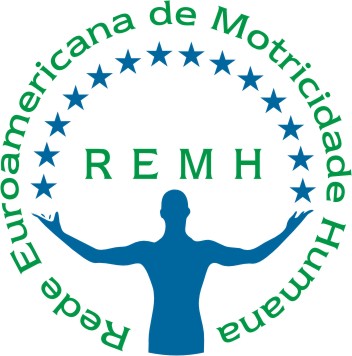Neuromodulação aplicada no córtex pré-frontal dorsolateral aumenta o alcance de movimento do quadril: Um estudo controlado randomizado
Resumo
O estudo procurou investigar o impacto da estimulação transcraniana por corrente contínua anódica (a-tDCS) na amplitude de movimento do quadril (HROM) em homens treinados recreativamente. Secundariamente, foi avaliada a percepção da dor. 20 homens (23.3 ± 5.2 anos), com HROM esquerda de 113.9° e direita de 111.5°. Eles foram divididos em dois grupos: a-tDCS e sham-tDCS. Ao longo de três visitas, foram realizadas avaliações antropométricas e de amplitude de movimento passiva. Nas duas visitas seguintes, foram aplicadas as respectivas estimulações e a HROM foi medida antes e depois de cada sessão. A ANOVA mostrou um aumento significativo na HROM no grupo a-tDCS nas pernas esquerda (p = .01) e direita (p = .014), enquanto o grupo sham-tDCS não apresentou nenhuma alteração. A percepção da dor foi máxima em todas as condições. Foi demonstrado que a estimulação a-tDCS melhorou HROM em homens treinados recreacionalmente; no entanto, a percepção da dor não foi alterada.
Downloads
-
Resumo439
-
(242-256) Neuromodulation...164
Referências
Antal, A., Luber, B., Brem, A. K., Bikson, M., Brunoni, A. R., Cohen Kadosh, R., . . . Paulus, W. (2022). Non-invasive brain stimulation and neuroenhancement. Clinical Neurophysioly Practice, 7, 146-165. https://doi.org/10.1016/j.cnp.2022.05.002
Boggio, P. S., Zaghi, S., Lopes, M. & Fregni, F. (2008). Modulatory effects of anodal transcranial direct current stimulation on perception and pain thresholds in healthy volunteers. European Journal of Neurology, 15(10), 1124-1130. https://doi.org/10.1111/j.1468-1331.2008.02270.x
Cejudo, A., Sainz de Barranda, P., Ayala, F., & Santonja, F. (2013). Fiabilidad absoluta de 2 pruebas de valoración del rango de movimiento del tobillo en jugadores de balonmano. Cuadernos de Psicología del Deporte, 12(2), 23–30. https://doi.org/10.6018/280391
DaSilva, A. F., Volz, M. S., Bikson, M., & Fregni, F. (2011). Electrode positioning and montage in transcranial direct current stimulation. JoVe Journal, (51). https://doi.org/10.3791/2744
Dixon, J. S., & Bird, H. A. (1981). Reproducibility along a 10 cm vertical visual analogue scale. Ann Rheum Dis, 40(1), 87-89. https://doi.org/10.1136/ard.40.1.87
Florêncio, L. L., Pereira, P. A., Silva, E. R. T., Pegoretti, K. S., Gonçalves, M. C., & Grossi, D. B. (2010). Agreement and reliability of two non-invasive methods for assessing cervical range of motion among young adults. Brazilian Journal of Physical Therapy, 14(2), 175-181. https://doi.org/https://doi.org/10.1590/S1413-35552010005000011
Henriques, I. A. D., Lattari, E., Torres, G., Rodrigues, G. M., Oliveira, B. R. R., Neto, G. A. M., . . . Machado, S. (2019). Can transcranial direct current stimulation improve range of motion and modulate pain perception in healthy individuals? Neurosci Lett, 707, 134311. https://doi.org/10.1016/j.neulet.2019.134311
Klem, G. H., Luders, H. O., Jasper, H. H., & Elger, C. (1999). The ten-twenty electrode system of the International Federation. The International Federation of Clinical Neurophysiology. Electroencephalogr Clin Neurophysiol Suppl, 52, 3-6. https://www.ncbi.nlm.nih.gov/pubmed/10590970
Lins, V., Lattari, E., Monteiro, D., Cid, L., & Albuquerque, G. M. N. (2020). Effects of transcranial direct current stimulation on joint flexibility and pain in sedentary male individuals. Science & Sports, 35(3), 137-144. https://doi.org/doi.org/10.1016/j.scispo.2019.01.005
Lattari, E., Andrade, M. L., Sá Filho, A., Moura, A., Maranhão Neto, G., Silva, J. G., Rocha, N. B., Yuan, T., Arias-Carrión, O., & Machado, S. (2016). Can Transcranial Direct Current Stimulation Improve the Resistance Strength and Decrease the Rating Perceived Scale in Recreational Weight-Training Experience? The Journal of Strength & Conditioning Research, 30(12):3381-3387. https://doi.org/doi.org/10.1519/JSC.0000000000001457
Malta, M., Cardoso, L. O., Bastos, F. I., Magnanini, M. M., & Silva, C. M. (2010). STROBE initiative: guidelines on reporting observational studies. Revista Saude Publica, 44(3), 559-565. https://doi.org/10.1590/s0034-89102010000300021
Machado, S., Maciel de Lima, J. L., Lana, W., Serrano, R., Gomes dos Santos, Y., Marques Neto, S. R., … Cid, L. (2019). Estimulación transcraneal de corriente continua anódica como potencial recurso ergogénico para fuerza muscular y percepción de esfuerzo: una revisión crítica. Cuadernos de Psicología del Deporte, 19(3), 216–242. https://doi.org/10.6018/cpd.373431
Martínez-Sanz, J., Mielgo Ayuso, J., & Janci-Irigoyen, J. (2013). Estudio de la composición corporal en deportistas masculinos universitarios de diferentes disciplinas deportivas. Cuadernos de Psicología del Deporte, 12(2), 89–94.
McMorris, T. (2021). The acute exercise-cognition interaction: From the catecholamines hypothesis to an interoception model. International Journal of Psychophysiology, 170, 75-88. https://doi.org/10.1016/j.ijpsycho.2021.10.005
Mizuno, T., & Aramaki, Y. (2017). Cathodal transcranial direct current stimulation over the Cz increases joint flexibility. Neuroscience Research, 114, 55-61. https://doi.org/10.1016/j.neures.2016.08.004
Nitsche, M. A., & Paulus, W. (2000). Excitability changes induced in the human motor cortex by weak transcranial direct current stimulation. Journal of Physiology, 527, Pt 3, 633-639. https://doi.org/10.1111/j.1469-7793.2000.t01-1-00633.x
Pageaux, B. (2014). The psychobiological model of endurance performance: an effort-based decision-making theory to explain self-paced endurance performance. Sports Med, 44(9), 1319-1320. https://doi.org/10.1007/s40279-014-0198-2
Robertson, C. V., & Marino, F. E. (2016). A role for the prefrontal cortex in exercise tolerance and termination. Journal of Application Physiology, 120(4), 464-466. https://doi.org/10.1152/japplphysiol.00363.2015
Rodrigues, G. M., Lattari, E., Oliveira, F., Oliveira, B. R. R., & Machado, S. (2022). Effects of cathodal transcranial direct current stimulation on hip range of motion of healthy sedentary women: A crossover study. Neuroscience Letters, 788, 136843. https://doi.org/10.1016/j.neulet.2022.136843
Rosenthal, J. A. (1996). Qualitative Descriptors of Strength of Association and Effect Size. Journal of Social Service Research, 21(4), 37-59. https://doi.org/doi: 10.1300/J079v21n04_02
Stewart, A., Marfeell-Jones, M., Olds, T., & Ridder, H., D. (2011). International Society for Advancement of Kinanthropometry. In L. H. International Society for the Advancement of Kinanthropometry, New Zealand, Ed. 3.
Støve, M. P., Hirata R. P., & Palsson, T. S. (2021) The tolerance to stretch is linked with endogenous modulation of pain. Scandinavian Journal of Pain, 21(2), 355–363. https://doi.org/10.1515/sjpain-2020-0010
Wilkins, L. W. (2017). ACSM’s Health-related Physical Fitness Assessment (5 ed.).
Las obras que se publican en esta revista están sujetas a los siguientes términos:
1. El Servicio de Publicaciones de la Universidad de Murcia (la editorial) conserva los derechos patrimoniales (copyright) de las obras publicadas, y favorece y permite la reutilización de las mismas bajo la licencia de uso indicada en el punto 2.
2. Las obras se publican en la edición electrónica de la revista bajo una licencia Creative Commons Reconocimiento-NoComercial-SinObraDerivada 3.0 España (texto legal). Se pueden copiar, usar, difundir, transmitir y exponer públicamente, siempre que: i) se cite la autoría y la fuente original de su publicación (revista, editorial y URL de la obra); ii) no se usen para fines comerciales; iii) se mencione la existencia y especificaciones de esta licencia de uso.
3. Condiciones de auto-archivo. Se permite y se anima a los autores a difundir electrónicamente las versiones pre-print (versión antes de ser evaluada) y/o post-print (versión evaluada y aceptada para su publicación) de sus obras antes de su publicación, ya que favorece su circulación y difusión más temprana y con ello un posible aumento en su citación y alcance entre la comunidad académica. Color RoMEO: verde.








